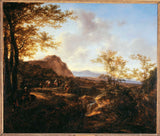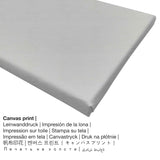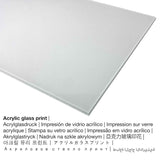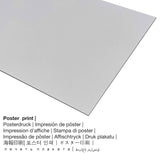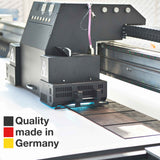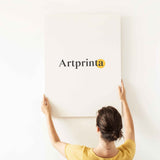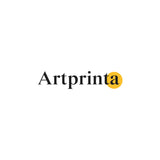Jan Dirksz Abụọ, 1650 - Okirikiri ala na ndị njem - mbipụta nka mara mma
Ụtụ gụnyere. Mbupu gbakọrọ na ndenye ọpụpụ.
Overview
Okirikiri ala na ndị njem onye na-ese ihe mere ya Jan Dirksz abụọ n'afọ 1650. Ihe osise ahụ nwere nha ndị a Ogologo: 68,1 cm, obosara: 80,3 cm. Oil painting was used by the artist as the medium of the artwork. The original artwork is inscribed with the information: Signature - Signed lower right: "JBoth f.". Nke a na-arụ ọrụ nka bụ nke dijitalụ collection nke Petit Palais - Musée des Beaux-arts de la Ville de Paris. With courtesy of Petit Palais Paris (licensed: public domain).In addition to that, the artwork has the creditline: . Further, the alignment of the digital reproduction is odida obodo na nwere akụkụ ruru nke 1.2: 1, nke pụtara na ogologo bụ 20% ogologo karịa obosara.
Nkọwa ndị ọzọ sitere na Petit Palais - Musée des Beaux-arts de la Ville de Paris (© - site Petit Palais - Musée des Beaux-arts de la Ville de Paris - Petit Palais - Musée des Beaux-arts de la Ville de Paris)
Of travelers and their horses run on a road lined on the right of a waterfall. In the center of the table, a designer sitting is accompanied by a companion standing. The reason for the background Ponte Lucano and the tomb of Plautii normally located in the outskirts of Rome represented here out of their real environment. In the distance and beyond the plain, there are mountains.
This table shows the classic pattern of Italianate landscapes executed by Jan Both after returning from the trip to Italy made in the second half of the 1630s with his brother.
Landscape, Pastoral Scene, Old Building, traveler, Horse, Designer, Italy, Bridge Lucano (Tivoli), Tomb of Plautii
Nkọwa na nka nka pụrụ iche
| Aha nke ọrụ nka: | "Okirikiri ala na ndị njem" |
| Nhazi: | sere |
| Okwu nche anwụ: | nka ochie |
| oge: | 17th narị afọ |
| Afọ nka: | 1650 |
| Ogologo afọ nka nka: | gbara afọ 370 |
| Usoro nka izizi: | Agba mmanụ |
| Akụkụ izizi (ọrụ nka): | Ogologo: 68,1 cm, obosara: 80,3 cm |
| Akanyere (ọrụ nka): | Signature - Signed lower right: "JBoth f." |
| Egosiputara na: | Petit Palais - Musée des Beaux-arts de la Ville de Paris |
| Ebe ebe ngosi nka: | Paris, France |
| ibe weebụ: | www.petitpalais.paris.fr |
| Ụdị ikike nka: | ngalaba ọha |
| Site n'aka: | Petit Palais Paris |
Tebụl onye na-ese ihe
| Aha onye nka: | Jan Dirksz abụọ |
| Ọrụ nke onye na-ese ihe: | onye na-ese ihe |
| nhazi ọkwa: | nna ukwu ochie |
| Oge ndu: | 34 afọ |
| Afọ ọmụmụ: | 1618 |
| Ebe amụrụ onye: | Utrecht |
| Nwụrụ n'afọ: | 1652 |
| Ebe ọnwụ: | Utrecht |
Nweta ihe ebipụta nka kacha amasị gị
Anyị na-enye ihe dị iche iche dị iche iche na nha maka ngwaahịa ọ bụla. Họrọ nha na ihe kacha amasị gị n'ime nhọrọ ndị a:
- Mbipụta kanvas: A UV printed canvas material stretched on a wood stretcher frame. Canvas prints are relatively low in weight, meaning that it is easy to hang your Canvas print without additional wall-mounts. Canvas prints are suitable for all kinds of walls.
- Poster (akwa akwa akwa): Our poster print is a UV printed canvas paper with a slightly rough surface finish, that resembles the original version of the work of art. Please keep in mind, that depending on the size of the poster print we add a white margin of around 2-6 cm around the artwork, which facilitates the framing.
- Bipụta na iko acrylic na-egbuke egbuke: The print on acrylic glass, which is often described as a UV print on plexiglass, will transform the artwork into beautiful décor. The artwork will be made with the help of modern UV direct print machines. It creates rich and stunning print colors. The acrylic glass protects your custom art print against sunlight and external influences for between 4 and six decades.
- Mbipụta nke aluminom: An Aluminium Dibond print is a print with a true depth effect. A non-reflective surface structure creates a modern impression. The white & bright components of the original artpiece shine with a silk gloss but without glare.
Tebụl ngwaahịa
| Ụdị edemede: | ọmarịcha nka |
| Usoro mmeghari: | dijitalụ mmeputakwa |
| Production usoro: | Mbipụta UV / dijitalụ |
| Production: | German mere |
| Ụdị ngwaahịa: | mmepụta ihe na-achọ |
| A na-atụ aro iji ngwaahịa eme ihe: | mgbidi gallery, ime ụlọ |
| Ndepụta: | usoro odida obodo |
| Oke akụkụ onyonyo: | (ogologo: obosara) 1.2: 1 |
| Pụtara nha onyonyo a: | ogologo bụ 20% ogologo karịa obosara |
| Ihe mmeputakwa dị: | Mpempe iko acrylic (nke nwere ezigbo mkpuchi iko), mbipụta ọla (aluminium dibond), mbipụta akwụkwọ mmado (akwụkwọ kwaaji), mbipụta kwaaji. |
| Ọdịiche dị n'okirikiri akwa akwa akwa (akwa akwa): | 60x50cm - 24x20", 120x100cm - 47x39", 180x150cm - 71x59" |
| Mpempe iko acrylic (nwere ezigbo mkpuchi iko) nha dị iche iche: | 60x50cm - 24x20", 120x100cm - 47x39", 180x150cm - 71x59" |
| Mpempe akwụkwọ mmado (akwụkwọ kwaaji) nha: | 60x50cm - 24x20", 120x100cm - 47x39" |
| Nha aluminom dibond (ihe aluminom) nha: | 60x50cm - 24x20", 120x100cm - 47x39" |
| Nhazi mmeputa nka nka: | na-enweghị etiti |
Ederede iwu: We try the best we can in order to depict our art products as closely as possible and to showcase them visually in our shop. However, the tone of the printed materials, as well as the print result may differ slightly from the presentation on the device's screen. Depending on your settings of your screen and the quality of the surface, color pigments may not be printed 100% realistically. In view of the fact that all our art prints are printed and processed manually, there may also be minor deviations in the exact position and the size of the motif.
Edobere ederede a site na nwebisiinka © , Artprinta.com (Artprinta)

